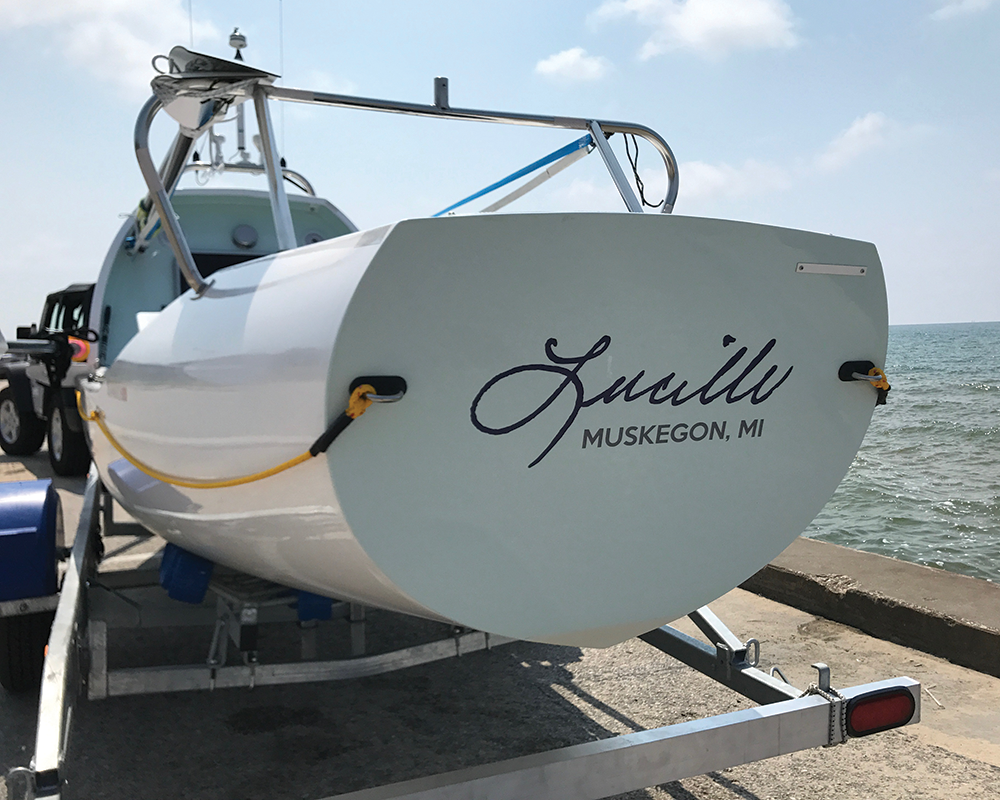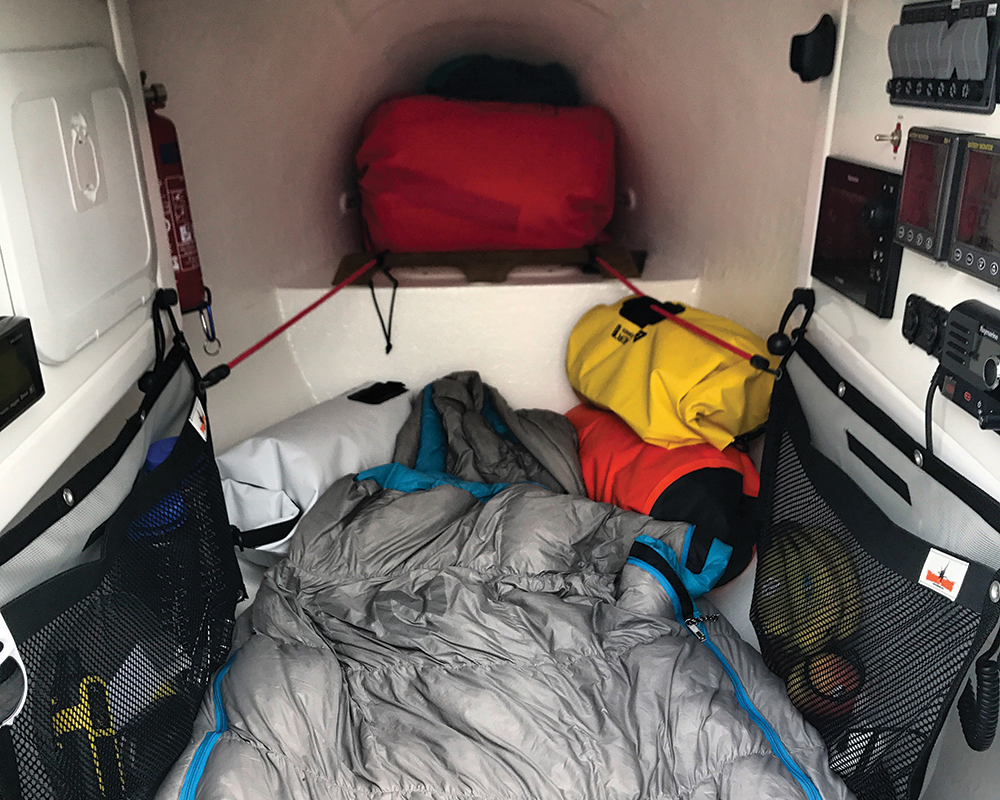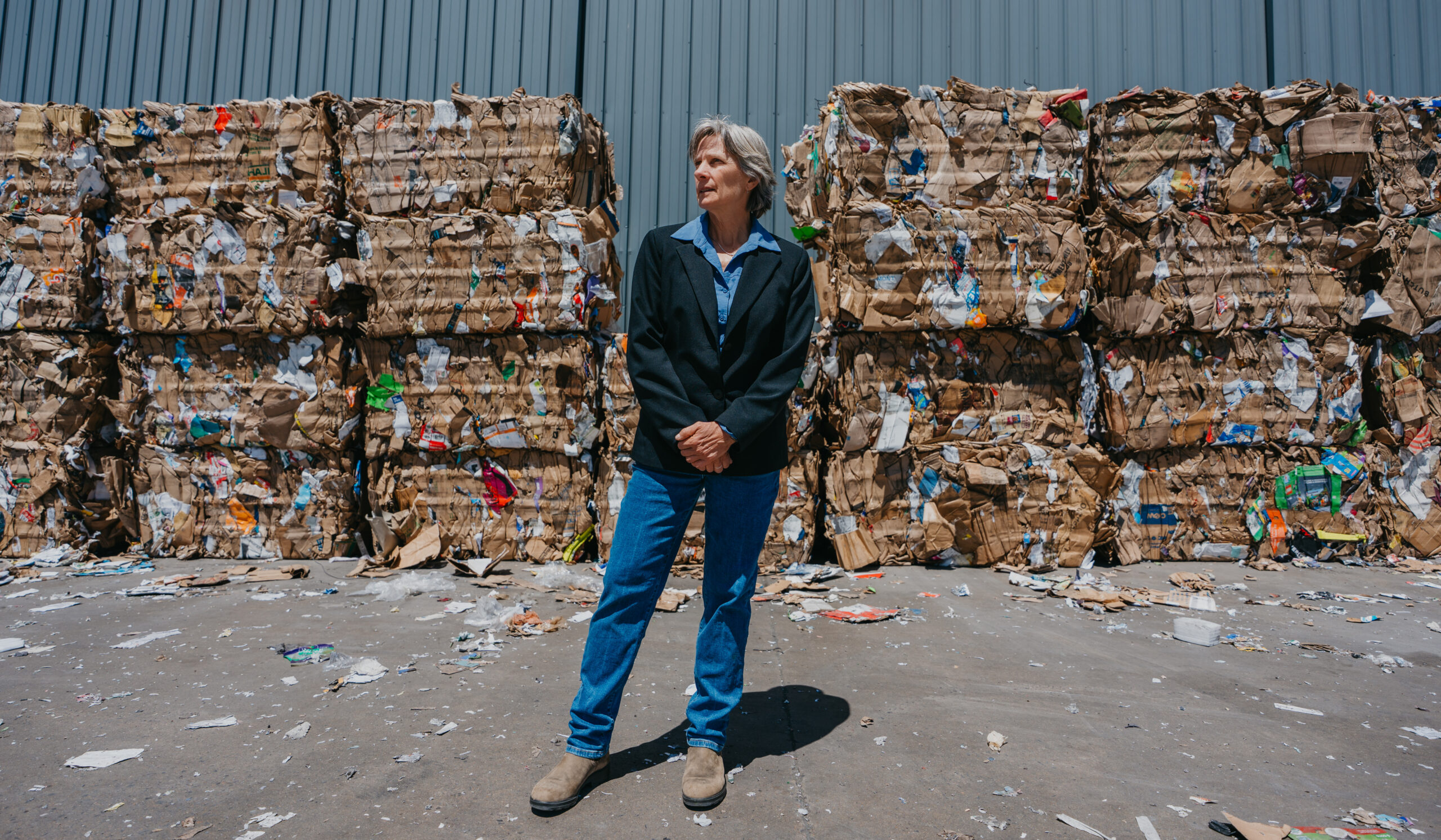On June 12, Bryce Carlson, ’03, departed his home in Cincinnati by car with his customized row boat in tow and his sights set on Penzance, the port town on the southwestern tip of England. Also in his sights was his goal of becoming the first American to row solo and unsupported across the Atlantic Ocean. This was only the beginning of a 2,000-mile journey he’d spent more than two years training to accomplish.
“For as long as I can remember, I’ve loved to explore and learn,” says Carlson, a high school biology teacher at The Seven Hills School in Cincinnati. “The North Atlantic solo row would get me out on the ocean, an environment I’ve long been fascinated with. The conditions would be as tough as any I’d ever experienced, and I’d be accountable to no one but myself. That was a very unique challenge that I didn’t know how I’d respond to.”
A journey of this magnitude comes with its share of obstacles or, as Carlson identifies them, “layers of challenges.” The solo, unsupported row was—and still is—a huge financial burden, as Carlson poured his savings into his 20-foot row boat, Lucille (named for his grandmother). In addition to its carbon fiber hull, the boat was equipped with solar panels for providing energy, GPS navigation systems, a VHF radio, safety equipment, and several weeks’ worth of meals for a journey he estimated at 50 to 60 days.
The first obstacle Carlson faced came day one in the waters off St. John’s, Newfoundland, where he launched his journey on June 27. His brand new desalinator—necessary for removing minerals from salt water—had failed. Carlson and his friend Yusuf Harris spent a week in St. John’s attempting to repair the malfunctioning desalinator before they eventually ordered a second one and installed it themselves. Having barely set out on the Atlantic Ocean, Carlson realized the second desalinator, too, was malfunctioning.

Carlson named his 20-foot row boat for his grandmother.
“For the next 37 days, I would rely on my backup emergency desalinator,” Carlson says. “This device provided the same service but required one to two hours of manual pumping each day to provide enough fresh water to meet my needs.”
On day five, Lucille rolled for the first time and the damage was evident. Says Carlson: “My laptop computer was fried. The main navigation system, stereo, cabin light, automatic identification system, primary GPS, secondary GPS, and external data monitors became unreliable—or died completely at some point—as a result of seawater infiltration.”
Nevertheless, Carlson continued on his way; more brutal days of rowing were ahead. He still had big storms, extremely cold temperatures, and 15-foot waves to look forward to.
“He was determined to find a way,” says Richard Carlson, Bryce’s father.
Another handful of days passed before Lucille’s autopilot and centerboard quit working. Without the centerboard, Carlson was bound to experience more rolling; indeed, the boat capsized more than 12 times throughout his trip.
“The loss of the centerboard proved particularly troublesome,” Carlson says. “I was forced to steer a greater angle into the wind to maintain a due-east heading.”
None of this was as difficult for Carlson to manage as his struggle to balance his nutrition and physical exertion. His rations were highly processed and acidic. Consuming those, while pushing his body to extremes, came with consequences.” Approximately halfway through the row, I developed acid reflux, indigestion, and abdominal pain. The harder I rowed, the more reflux and pain I felt. The more I ate, the more reflux and pain I felt,” Carlson explains.

With his arrival in St. Mary’s, Isles of Scilly, he set a Guinness World Record for the fastest solo unsupported row across the North Atlantic Ocean by average speed.
In one text message to his friend Alex Catalan from the Atlantic, Carlson specifically mentioned his stamina was failing: “One problem I noticed is that I get a little weaker every day I spend in the cabin,” reads the message. (Poor weather conditions also forced Carlson away from the oars.) “I can’t pump water, so I ration it. And because I’m not working, I have zero appetite and eat maybe 1000-1500 kcal of food.” While eating less helped him manage his digestive symptoms, Carlson then experienced weakness from malnutrition.
As day turned to night, Wednesday became Thursday, and a calendar month passed, Carlson trekked onward, knowing better days were ahead. “There was a sense of disassociation (being alone for so long),” Carlson says now.
Strong winds and drifting forced Carlson to re-navigate toward St. Mary’s, Isles of Scilly, which is off the coast of England. His supporters rushed to relocate themselves also, according to Catalan, and managed to get from Penzance to St. Mary’s in a matter of hours in order to greet Carlson when he arrived on Aug. 4.
“On the horizon, for the first time in over a month, as a small white dot, I could finally see Bryce,” Catalan says. “While he was exhausted, I remember Bryce coming to shore and sporting a huge smile.”
“(My wife Susan and I) were simply elated that he was safe and so proud of his successful accomplishment,” says the elder Carlson. “Overall, he was in great shape.”

With his arrival in St. Mary’s, Isles of Scilly, he set a Guinness World Record for the fastest solo unsupported row across the North Atlantic Ocean by average speed.
Carlson accomplished the feat in 38 days, 6 hours, and 49 minutes, setting a Guinness World Record for the fastest solo unsupported row across the North Atlantic Ocean by average speed. In comparing his statistics with those recorded by the Ocean Rowing Society, Carlson also holds two more unofficial records: fastest row across the North Atlantic Ocean by time and fastest solo unsupported row across the North Atlantic Ocean, also by time.
“I had grown so accustomed to managing the day-to-day challenge logically and without emotion,” Carlson says. “It took some time to really feel much excitement at being ‘done.’”
He has since docked and made his way back to the U.S. and, ultimately, back into his routine of teaching and serving as director of strength and conditioning at Seven Hills. Not long removed from being alone in the middle of nowhere, Carlson tells of what’s next.
“I’d love to continue research with colleagues and educators on future adventures where I might collect data for science and develop new curricula for the classroom.”
Will Rettig works for 4th Floor Creative and is a freelance writer in his spare time. He graduated from Indiana University, class of 2012, and lives in Cincinnati with his wife, Erica.





